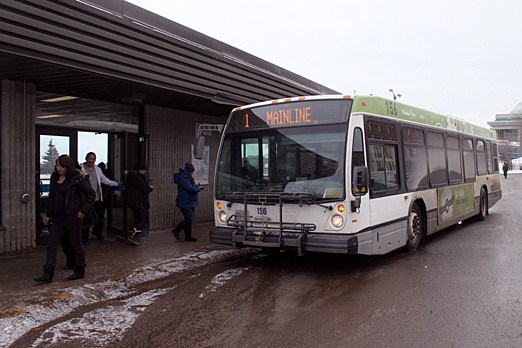THUNDER BAY – Thunder Bay’s public transit system is looking to maintain the status quo in a year that’s sure to be anything but, says transit manager Brad Loroff, as city council prepares to examine the department’s proposed 2021 budget.
“It’s really a status quo budget,” Loroff said. “There are no major changes other than what’s been identified with the COVID impact.”
The proposed budget contains some of that impact, while moving forward on initiatives like fleet renewal, the expansion of specialized transit services, the introduction of an electronic fare management system, and testing on-demand micro transit options.
It also includes what Loroff described as “nominal changes” to fares and fees, with an average two per cent increase, while keeping cash fare at three dollars.
Overall, the net cost to the city to operate transit would increase by nearly 10 per cent, to roughly $12.7 million.
That increase still blunts the impact of an anticipated $1.7 million drop in revenue from a normal year, as COVID-19 continues to depress ridership significantly.
The projected user fee revenues of $5.3 million assume a significant rebound from last year’s estimated $3.6 million, however – partly thanks to a four-month period where the city suspended fare collection entirely in 2020.
The department modelled a 20 per cent decrease in ridership from normal levels for 2021, Loroff said, assuming a full recovery by the end of the second quarter.
He also holds out hope that higher orders of government could again provide relief funds for transit, among the public services hardest hit financially by the pandemic.
The city received about $3.2 million in transit-specific aid in 2020. Over $400,000 of that Safe Restart money remained to cover transit losses through March.
“We know transit pressures will continue beyond March,” city treasurer Linda Evans has said. “They certainly make up a significant portion of [COVID-19 losses].”
The city will also look to boost revenue with slight increases to some fees, averaging two per cent.
The 10-ride pass would see the largest proportional increase, from $25 to $25.75. Adult monthly passes would rise from $77.50 to $79, discounted monthly passes from $66 to $67, senior and youth monthly passes from $55 to $56, and the senior annual pass from $495 to $504.
The city estimates hikes would bring an additional $68,000 in revenue.
The department anticipates other savings, such as around $50,000 from moving maintenance of specialized transit in-house, and $100,000 in fuel savings.
The budget, including user fees, still requires approval by city council, which will debate the proposed document over the coming weeks and ratify the budget on Feb. 8.
The document also includes funding to move forward several potentially innovative changes to the transit system.
The department will begin work to introduce an electronic fare management system using smart cards this year, for example, though it likely won’t roll out until 2022.
The budget includes $2.5 million for continued renewal of the transit fleet, supporting an expansion of two vehicles to the city’s specialized LIFT+ paratransit service.
“We find ourselves providing a better service in respect to where it was,” since taking over the service in 2015, Loroff said.
However, an aging population was helping to drive growing demand, with the number of unaccommodated trip requests topping four per cent in 2019. The industry average is around two per cent, Loroff said.
The two new vans will help accommodate some of that, while they could also serve other functions, such as an on-demand micro transit pilot in Neebing.
“Where we’re looking at a low-performing conventional route that it might not make sense to run a fixed-route conventional bus, this is a vehicle type we could probably put towards that,” Loroff said.
The department’s $4.1 million capital budget, most of which comes from higher levels of government, will also support improvements like bus shelter replacements and accessibility upgrades.
